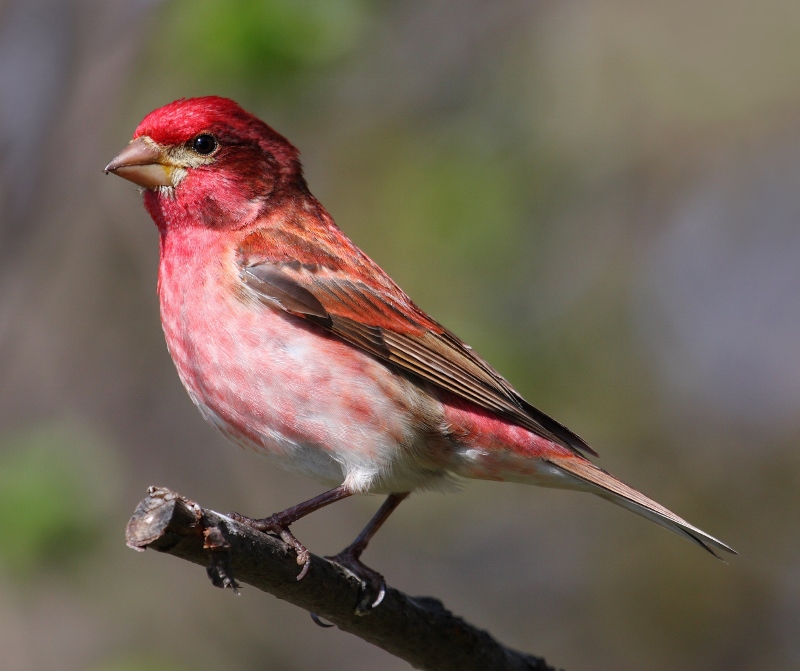 |
| Photo by Simon Barrette (Wikipedia) |
Common name:
purple finch (en); peito-rosado-púrpura (pt); roselin pourpré (fr); carpodaco morado (es); purpurgimpel (de)
Taxonomy:
Order Passeriformes
Family Fringillidae
Range:
This North American species is found breeding in southern and western Canada, along the west coast of the United States down to southern California and in the north-eastern United States. The more northern population migrate south to winter in the eastern half of the United States and along the Pacific coast down to northern Mexico.
Size:
These birds are 12-15 cm long and have a wingspan of 22-26 cm. They weigh 20-35 g.
Habitat:
The purple finch is found in coneferous and mixed forests, as well as in parks and gardens within urban areas, orchards, pastures and arable land.
Diet:
They mainly feed on seeds and buds, but will also eat insects and berries during spring and summer. They are known to eat the seeds and buds of elms Ulmus sp., tuliptree Liriodendron tulipifera, maples Acer sp., sweet gum Liquidambar styraciflua, sycamores Platanus sp., ash Fraxinus sp., red cedar Juniperus virginiana, juniper Juniperus communis and mountain ash Sorbus sp.
Breeding:
Purple finches breed in April-August. They are monogamous and the female build the nest alone. The nest is a cup made of twigs, roots and dry grasses, and lined with fine rootlets, hairs and moss. It is placed on an horizontal branch of a conifer, usually far from the trunk and 2-20 m above the ground. The female lays 4-6 pale greenish-blue eggs with brown or black speckles, which are incubated by the female for 13 days. The chicks are fed by both parents and fledge 13-16 days after hatching. Each pair raises a single brood per year.
Conservation:
IUCN status – LC (Least Concern)
This species has a very large breeding range and the global population is estimated at 3 million individuals. The population is undergoing a small decline, especially in the eastern parts of their range where the rate of decline reaches 1-2,5 % per year. The decline is most likely due to competition by introduced house finches Carpodacus mexicanus and house sparrows Passer domesticus.







